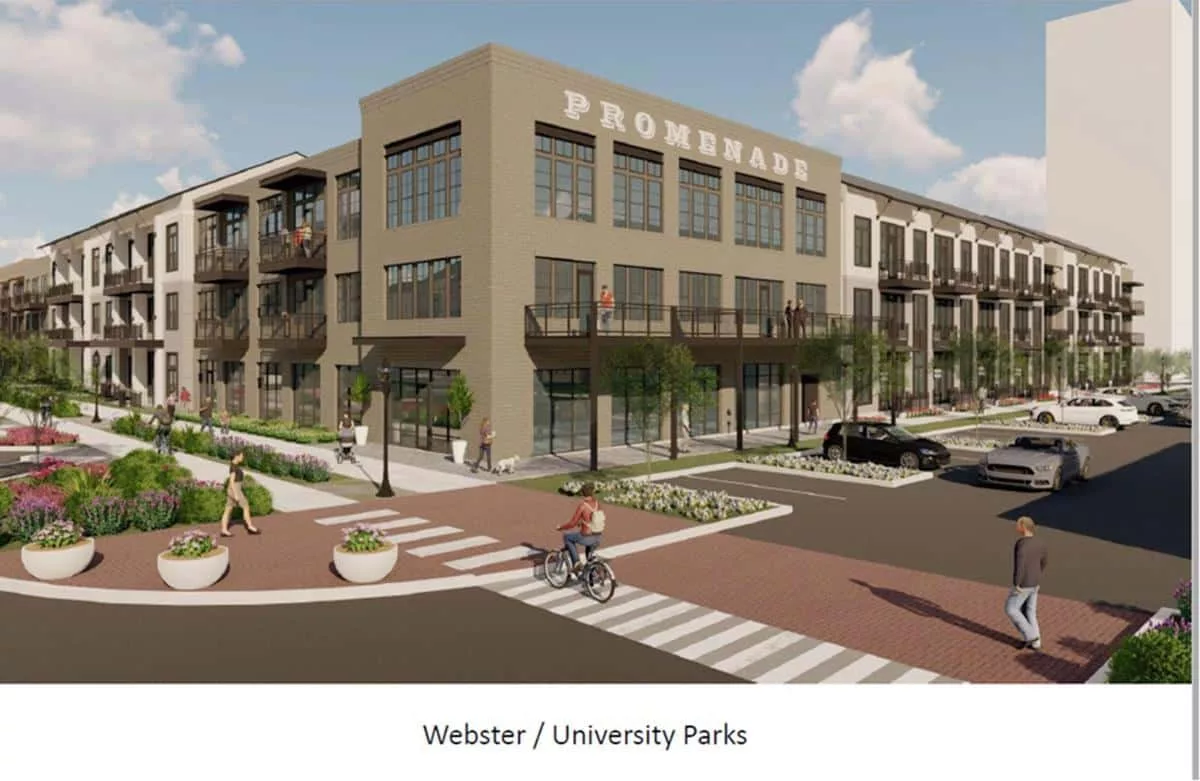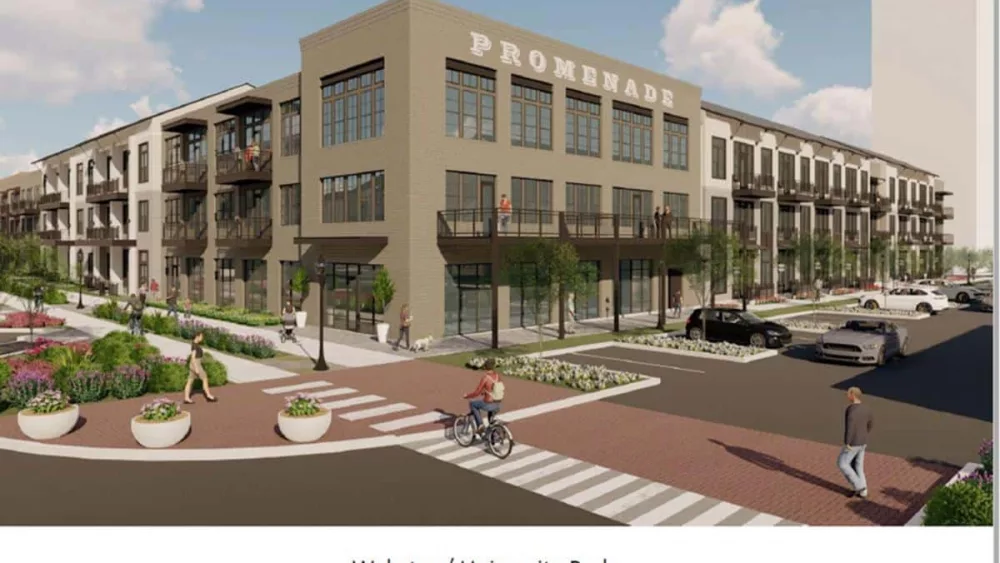
A mixed-use development on city-owned downtown riverfront that has made a habit of blowing past start dates has a new mark to aim for: March 20.
Catalyst Urban Development, developer of the planned $100 million Brazos Promenade, also has a building permit in place along with another $2.8 million in public money to pay for infrastructure upgrades requested by the city that were not in initial plans for the site, centered at University Parks Drive and Webster Avenue.
The most recent delay, from a Feb. 7 start date, and the additional city money are a result of the city’s requests for larger water, sewer and stormwater lines in the development, city economic development director Melett Harrison told the Waco City Council last week.
“During the design process, there were several amenities that were requested, upsizing of utilities, that were a cost factor,” Harrison said. “It was prudent of them to ask us to get that money secured.”
The money will initially come from the city’s general fund but is expected to ultimately be covered by the downtown Tax Increment Financing fund. The project won a $20.2 million TIF grant in 2016, but $8 million was earmarked for a site cleanup project that wrapped up in early 2018 and cost about $6 million less than expected, with the extra money going back to TIF coffers.
In four phases spanning to 2026, Catalyst plans to build retail space, restaurants, hotels, an outdoor music venue, apartments and space for the Waco Downtown Farmers Market to return to its Brazos riverfront home between Franklin Avenue and Interstate 35. It also will rework a stretch of University Parks Drive with more focus on pedestrians and cyclists.
“It’s a very complicated part of the city to work in. There’s a lot of old infrastructure,” Catalyst co-founder Paris Rutherford told the city council. “The good news is we’ve got everything designed and we’re ready to go.”
A major change requested by the city includes replacing a 5-by-8-foot storm drain along Webster Avenue with a 9-by-9-foot drain that will empty into the Brazos River. The city got a permit from the U.S. Army Corps of Engineers in December giving it permission to let that line drain into the river where it does not now, Harrison said.
Rutherford said the volume of runoff through the area was not clear until the company got further into the design and permitting process in the past six months or so.
“Basically all of downtown drains down here, so they had to go back and do a model study to look at the entire downtown and how it drains toward the river, and then factor in some of the TxDOT (Texas Department of Transportation) improvements that are going on,” Rutherford said.
Catalyst presented a proposal for the project in 2015 and reached a development agreement with the city by late 2016. Company or city officials have pegged projected start dates since at fall 2017, by the end of 2017, by late 2018 or early 2019, at September or October 2019, Feb. 7 and now March 20.
With infrastructure work first on deck, signs of construction are not likely to be conspicuous initially, Rutherford said.
“That’s probably several months down the line,” he said. “There is a lot of infrastructure work to be done. That’s probably going to be six months of effort.”
In addition to larger water, sewer and stormwater lines, the extra city money approved last week also will pay for a new gas line on Webster and a traffic signal.
The first phase of the project includes an apartment complex at Webster and University Parks and the reworked farmers market space, which would bring electrical outlets, a water feature, a play area and a ramp leading to the riverwalk.
The first phase, expected to take three years, also would include work on University Parks, with reduced lanes, wider medians, a new traffic light and bike lanes.
“Where it is possible, there will be protected bike lanes,” Harrison said. “That is predominantly just right beside the development that Catalyst is doing, but we do hope for the future that there could be actually protected lanes throughout the length of this project.”
— WACOTRIB
— WACOTRIB






